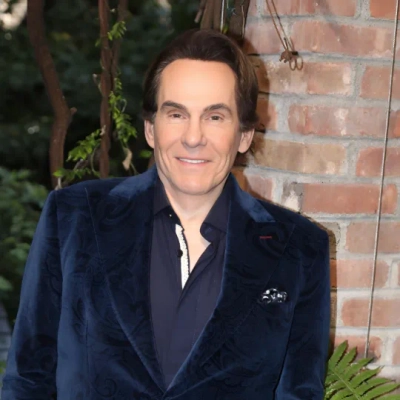How to Find the Perfect Suit
Discover the secrets to finding a suit that fits like a glove and enhances your appearance. This guide brings together expert advice on crucial aspects such as shoulder fit, proportions, and tailoring essentials. Learn how to identify the key elements that transform a good suit into the perfect one, setting you apart in any professional or formal setting.
- Start with Shoulder Fit for Success
- Prioritize Shoulders and Tailor the Rest
- Precise Shoulder Alignment Sets the Foundation
- Master Proportions for Timeless Elegance
Start with Shoulder Fit for Success
Fit is everything. The most expensive suit in the world won’t look right if it doesn’t fit your frame. My best tip? Start with the shoulders. If they’re too wide or too tight, nothing else will sit right. Once that’s sorted, pay attention to how the jacket hugs your torso and how the trousers fall. A good tailor can fine-tune almost anything, but getting the foundation right is key.
Men often overlook the sleeve length and where the jacket sits at the back; if it’s too long, it swamps you; if it’s too short, it looks like a hand-me-down. The break of the trousers is another detail that makes a difference. I prefer a slight break, it’s clean, sharp, and moves well.
I’ve always felt that a great suit should feel like armor and comfort rolled into one. It shouldn’t feel like a costume; it should feel like you. Whether I was walking into hospital appointments or investor meetings, wearing something that fit me well gave me a quiet confidence. Take the time to find a great tailor and ensure the suit reflects who you are. It’s not just about looking polished, it’s about feeling ready for whatever comes next.
 Paul Jameson
Paul Jameson
Founder, Aura Funerals
Prioritize Shoulders and Tailor the Rest
The single best tip for finding a well-fitting suit is to prioritize shoulder fit above all else. Shoulders are nearly impossible to alter cleanly—if they’re too wide or too narrow, the entire silhouette collapses. Once that’s right, everything else (sleeves, waist, length) can be tailored.
For a polished look, men should watch for a jacket that hugs the waist slightly without pulling, sleeves that show about a quarter inch of shirt cuff, and pants with a slight break at the shoe. Also, lapel width should match your frame; slim lapels on a broad chest look off-balance. I’ve seen countless off-the-rack suits transformed by small, precise alterations, but starting with the right foundation in the shoulders is key.
 Ira Lysa
Ira Lysa
CEO, Imperial Alterations
Precise Shoulder Alignment Sets the Foundation
I’d say that shoulder fit represents the foundational element of proper suit fitting, as this structural component cannot be economically altered once purchased, unlike most other dimensions. When assisting clients with wardrobe development, I emphasize that the jacket shoulder seam must precisely align with the natural shoulder edge; neither extending beyond nor falling short of this anatomical landmark. This alignment creates the proper framework for the entire garment, as shoulder misalignment creates cascading fit issues throughout the chest, arms, and back regardless of other alterations. A client recently avoided a costly mistake when we identified that a seemingly well-fitting jacket actually featured shoulders extending 0.7 inches beyond his natural shoulder line, a subtle discrepancy that would have created permanent fit issues despite the garment’s appropriate chest and waist dimensions.
For achieving a truly polished appearance, proper sleeve length calibration dramatically elevates perceived quality regardless of garment price point. The optimal jacket sleeve should reveal approximately 1/4 to 1/2 inch of shirt cuff when standing naturally with arms at sides: a precise measurement that creates visual balance while displaying an intentional layering effect. This seemingly minor detail signals careful attention to proportions while simultaneously creating a visual frame for accessories like watches or cufflinks. The precision of this measurement transforms even modestly priced garments into sharp, intentional ensembles when properly executed.
Beyond these foundational elements, trouser break determines whether a suit appears contemporary or dated regardless of its actual age or style. Modern proportions favor minimal break, where trousers lightly touch the shoe without creating fabric pooling, which creates a cleaner silhouette while avoiding the shortened appearance that characterizes extreme no-break styling. This subtle calibration requires precise measurement during the fitting process, as even 1/4 inch variations dramatically impact the final appearance.
 Seann Malloy
Seann Malloy
Founder & Managing Partner, Malloy Law Offices
Master Proportions for Timeless Elegance
My dear, after four decades of advising the most discerning gentlemen from Manhattan to Monaco, I’ve learned that true elegance lies in proportions. Your jacket sleeve should reveal precisely ¼ inch of shirt cuff – this subtle detail separates the merely dressed from the genuinely well-dressed.
Focus on fabric weight appropriate to your climate and lifestyle. When I was at Interview with Andy, I observed how the truly powerful never appeared constrained by their clothing. Choose natural fibers that breathe and move with you through champagne toasts and charity galas alike.
The most overlooked element? Proper jacket length. It should cover your posterior completely while allowing your hands to cup the bottom hem when standing naturally. I’ve watched countless titans of industry undermine million-dollar deals with jackets that missed this crucial mark.
Finally, invest in proper shoulder construction. I tell my clients that shoulders should follow your natural line without excessive padding – unless you’re attending a Dynasty-themed costume party. True power dressing whispers rather than shouts.
 R. Couri Hay
R. Couri Hay
Co-Founder, R. Couri Hay Columns
